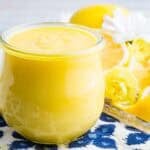This post may contain affiliate links. Read my disclosure policy.
This lemon curd recipe makes a bright batch of sweet-tart, silky smooth spread that’s amazing in so many desserts or smeared on breakfast favorites. Use it as a filling for cakes or cupcakes, sandwiched between cookies, drizzled on pancakes or toast, and so much more. Learn how to easily make lemon curd from scratch in this post.
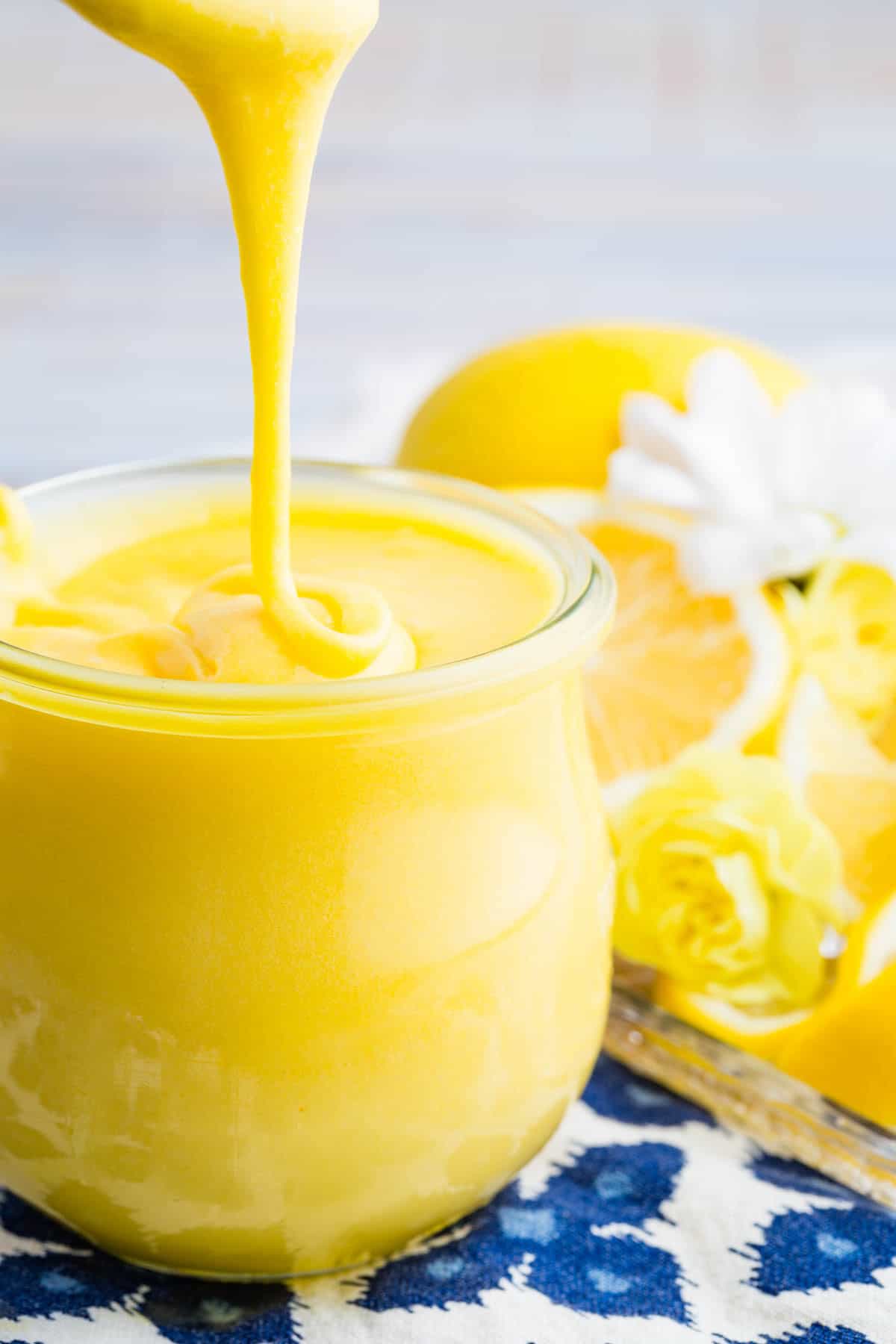
Delicious Details
- Cuisine Inspiration: English
- Primary Cooking Method: Stovetop
- Dietary Info: Gluten-free, Dairy-free option
- Skill Level: Easy
Why Make Lemon Curd From Scratch?
This homemade lemon curd recipe is your secret dessert weapon! It will add a touch of citrus flavor when draped over slices of Gluten Free Pound Cake, and you can use it in between Gluten Free Sugar Cookies to make easy sandwich cookies (or try it as the filling in these Gluten Free Lemon Cookie Sandwiches). Enjoy lemon curd spread on buttered toast or a few Gluten Free Strawberry Muffins. This is a versatile, user-friendly recipe that I know you will love.
- Better homemade! When you make lemon curd yourself, you ensure that there are none of the weird preservatives that might show up in purchased curd.It just tastes so much better with simple ingredients, and it’s thicker than many jarred varieties, so it holds up better as a dessert filling.
- Great way to use lemons. If you have a lemon tree, lucky you! This recipe will make good use of your homegrown lemons. And even if you don’t have a tree, take advantage of citrus season, stock up at the store, and make lemon curd!
- Save those egg whites! This recipe does double duty because you need just the yolks. Make sure to save the whites and make Pavlova or Gluten-Free Angel Food Cake!
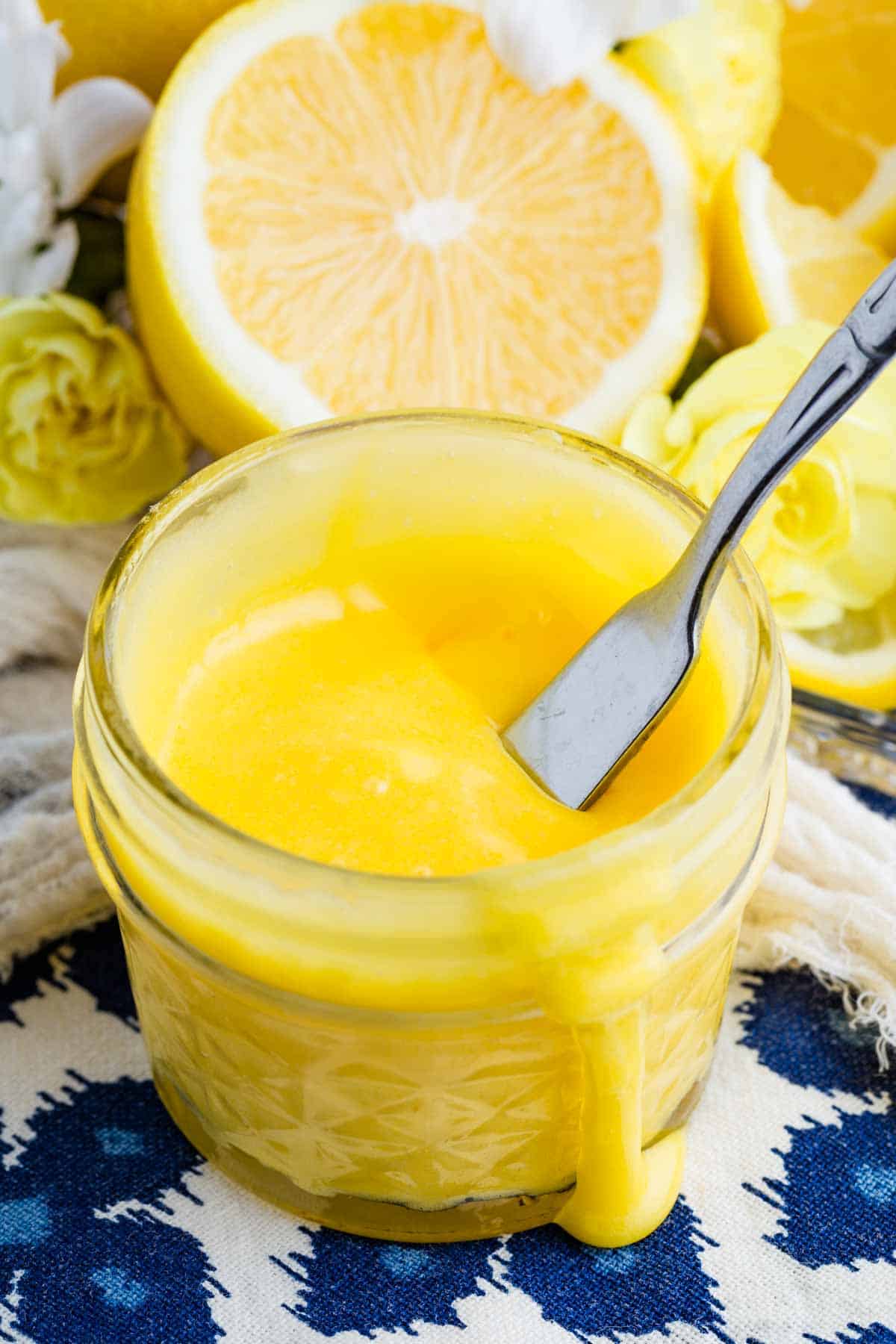
Recipe Ingredients
Just four ingredients are all you’ll need to make this beautiful lemon curd! Don’t forget to check the recipe card at the end of this post for the full ingredient amounts.
- Egg Yolks: I use yolks from large eggs. Keep the whites to use in other recipes!
- Granulated Sugar
- Lemon Juice: Use freshly squeezed lemon juice for the freshest, best flavor.
- Butter: Unsalted butter, brought to room temperature first, is best. You can substitute vegan butter for a dairy-free option.
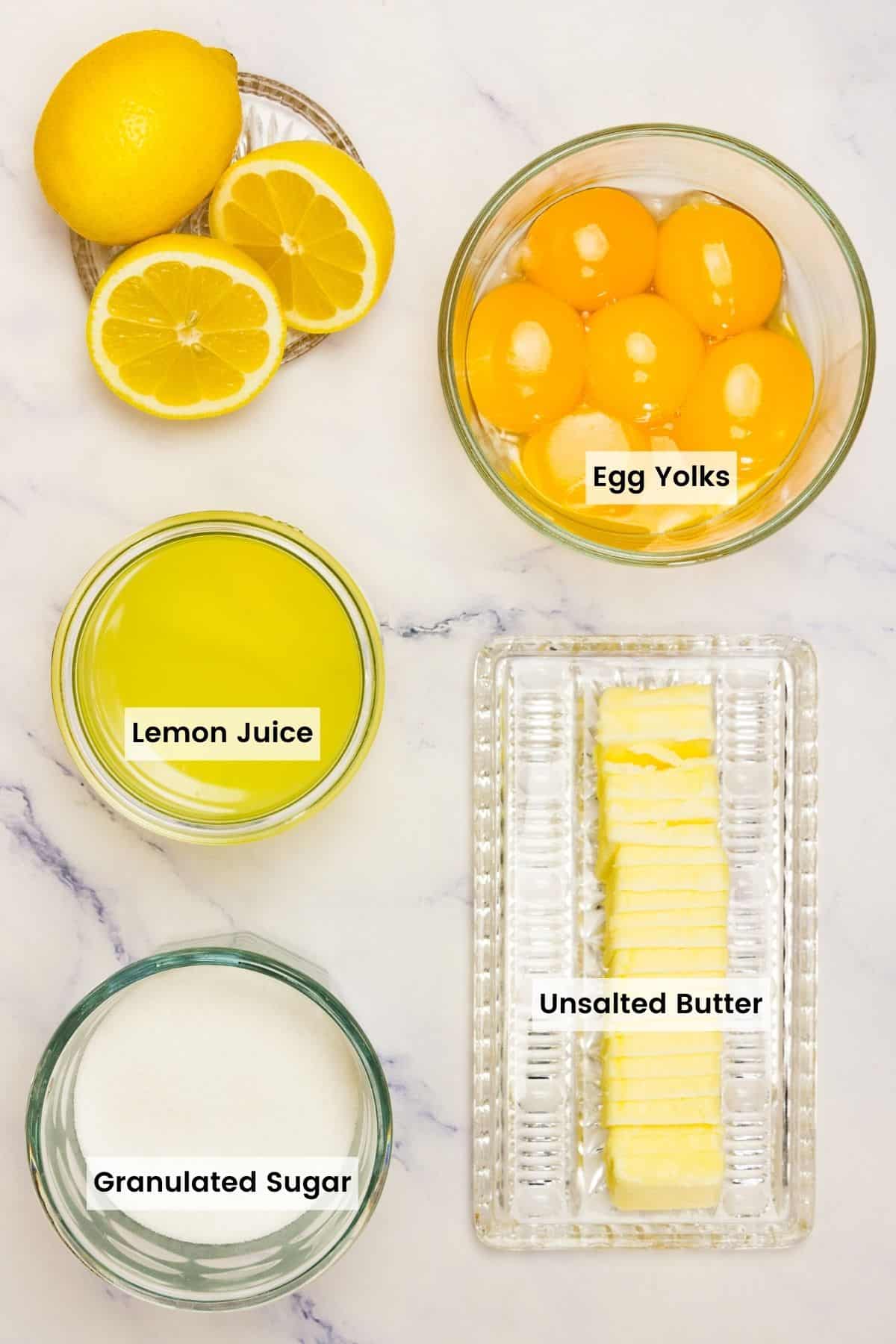
How to Make Lemon Curd
Keep the heat on low to start so that the eggs don’t cook too quickly, then gently increase the temperature if needed. See the detailed instructions in the recipe card lower down.
- Combine eggs and sugar. Bring a little water to a simmer in a pot, then in a glass bowl, whisk together the egg yolks and sugar.
- Add lemon juice. After the yolk mixture is smooth, whisk in the lemon juice.
- Heat. Place the bowl over the water in the saucepan and cook and stir constantly until thick.
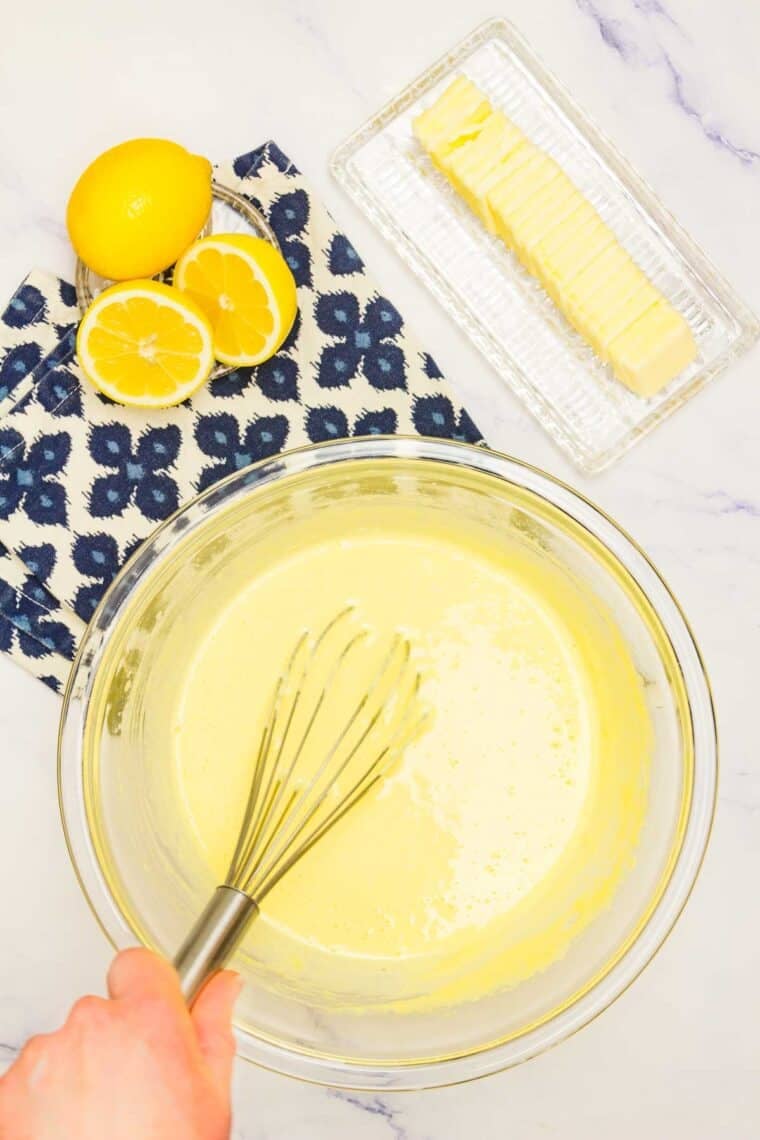
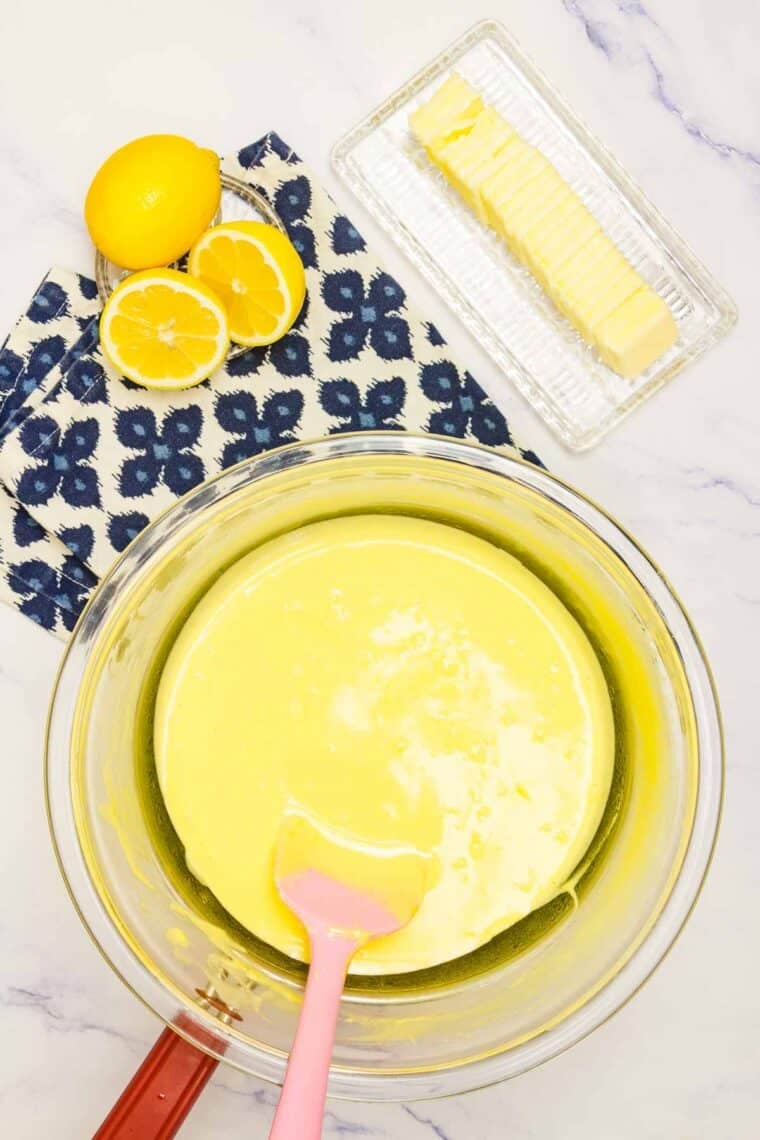
- Add butter. Remove from heat and whisk in the butter until fully combined.
- Strain. Make sure to strain the lemon curd through a sieve, then chill it before serving or storing in jars.
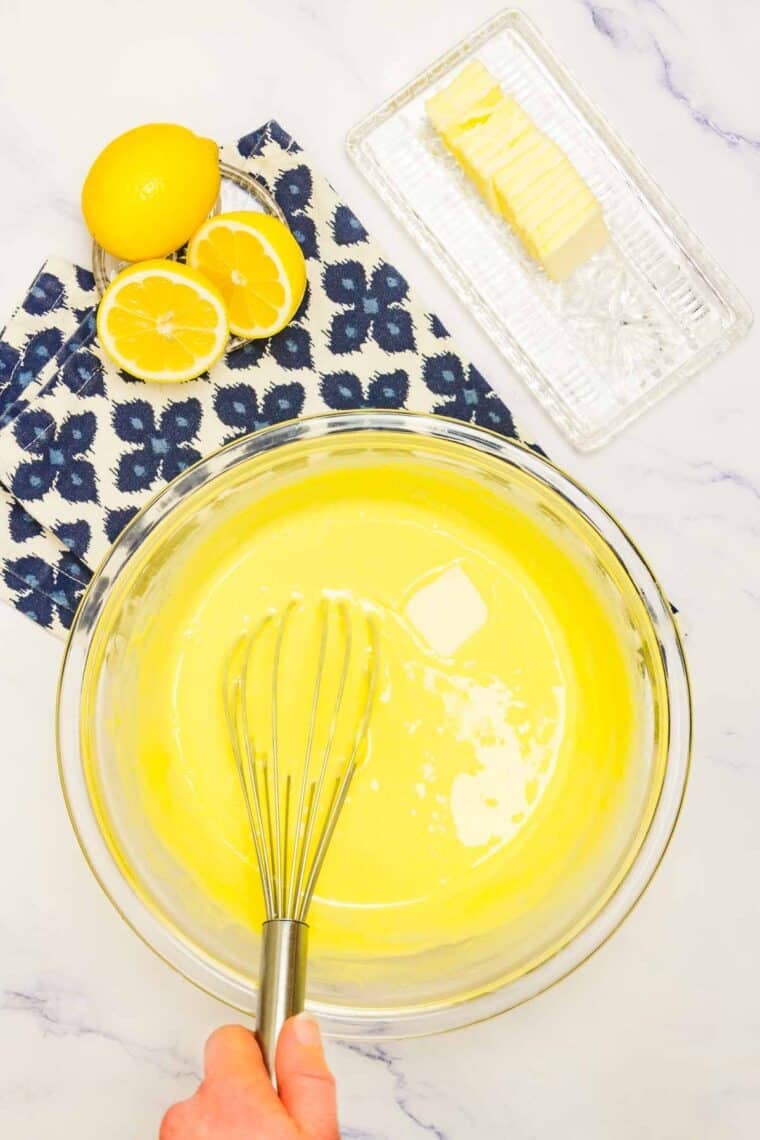
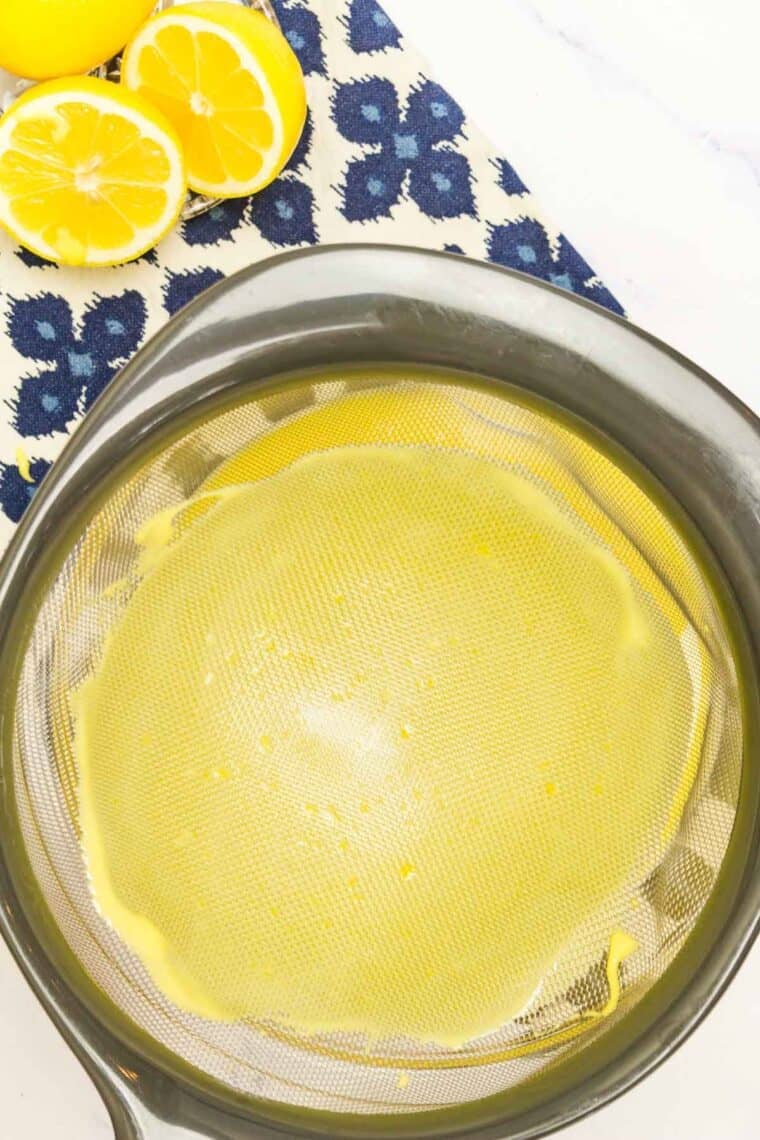
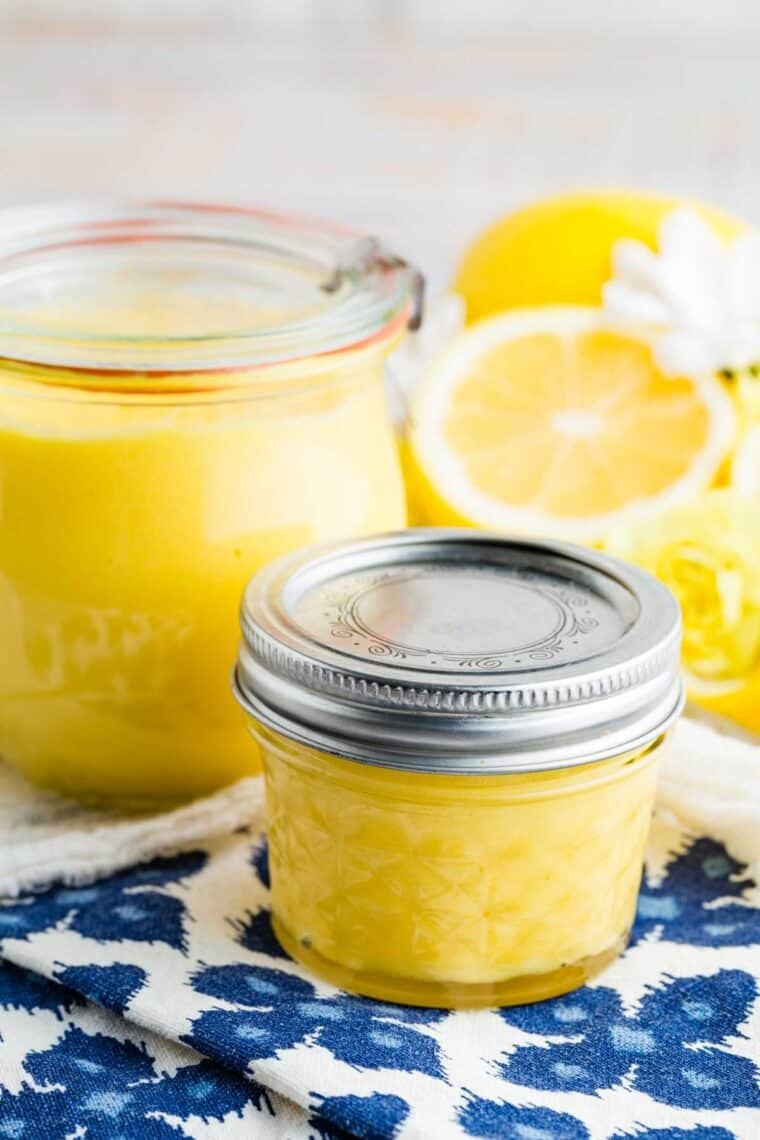
Avoiding Common Mistakes
It’s easy to make lemon curd, but the main issues that can crop up include a runny final batch of curd or the opposite—a lumpy curd. Neither one of these is ideal! But don’t worry, I’ll explain how to make the perfect lemon curd below:
Runny Consistency
A runny consistency can occur when the eggs have not cooked long enough. A way to know that the curd mixture is properly cooked is to dip a wooden spoon into it. If the curd thickly coats the back of the spoon, you can remove the lemon curd from the heat. If it’s still drippy and runny, keep stirring and cooking for another minute, then test it again. You can also use an instant-read thermometer. The curd is done when the thermometer reads 180°F.
Curdled or Lumpy Texture
The trickiest part of making lemon curd is when you add the egg yolks because if you add cold eggs to a hot mixture, the high temperature can cook (almost scramble) the eggs, leading to a lumpy curd. Bring the egg yolks to room temperature before combining them with the sugar. Another way to remove lumps is to strain the curd through a fine mesh strainer. This will create that smooth texture you’re going for. I recommend doing both of these steps each time you make lemon curd.
More Tips for Success
- Adjust the heat carefully. If you are not getting the mixture up to temperature, you can slowly increase the heat, but be sure to keep stirring and watch it carefully. In general, cooking on low heat will make sure the eggs don’t cook too quickly.
- Fresh lemon juice. I always use fresh-squeezed lemon juice for the best overall flavor. I like to use Meyer lemons in lemon curd because they have a light, floral sweetness, but any type of lemon will work.
- Then, cool completely. Lemon curd solidifies as it cools, so leave enough time for the curd to set and cool before using it.
- Place plastic wrap on the surface. A layer of plastic wrap pressed onto the surface of the lemon curd will keep a skin from forming as the curd chills.
- Try another citrus. Use this method to make another kind of citrus curd, like lime or orange, or even my grapefruit curd with a twist of vanilla for creamsicle vibes!
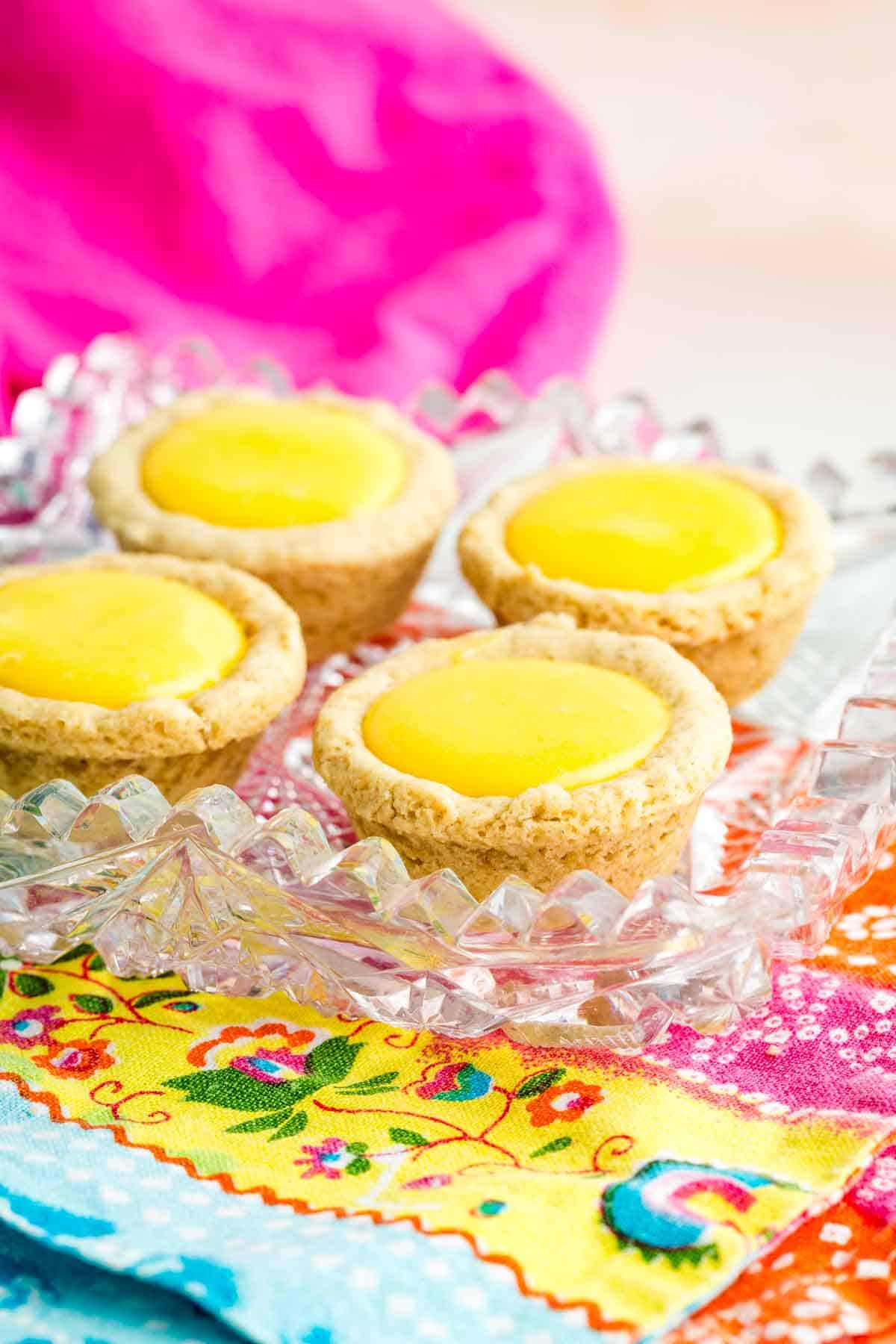
Ways to Use Lemon Curd
Lemon curd is fantastic in and on cakes, in sandwich cookies, or even as a simple dessert sauce or spread on toast. Here are a few more ideas:
- In cupcakes. Core out the center and add a dollop of lemon curd to Gluten Free Lemon Cupcakes, Gluten Free Coconut Cupcakes, or Gluten Free Vanilla Cupcakes before frosting them!
- With cake. Add even more lemon flavor to a Gluten Free Lemon Pound Cake with a drizzle of lemon curd over the top, use it to fill a Gluten Free White Cake, or add a little lemony burst to a Gluten Free Strawberries and Cream Cake.
- Muffins. Spread homemade lemon curd on Gluten Blueberry Muffins or Gluten Free Raspberry Muffins.
- Pancakes. Lemon curd is lovely on Gluten Free German Pancakes and Gluten Free Silver Dollar Pancakes.
- Toast. Make a loaf of Gluten Free Bread and serve slices toasted and topped with curd. I also like spreading slices of Gluten Free Banana Bread with lemon curd.
- Cookies. Dip some Gluten Free Ladyfingers into lemon curd or use it to fill Gluten Free Sugar Cookie Cups!
Proper Storage
- Fridge – Transfer the chilled and set lemon curd to an airtight container (I like a smaller Mason jar with a tight-fitting lid) and store it in the fridge for up to 2 weeks. Place a piece of plastic wrap on top of the surface of the curd to maintain freshness before adding the lid.
- Freezer – Place lemon curd in a freezer-safe, sealed container and store it in the freezer for up to 1 year. Thaw it overnight in the fridge before using.
More Lemony Recipes
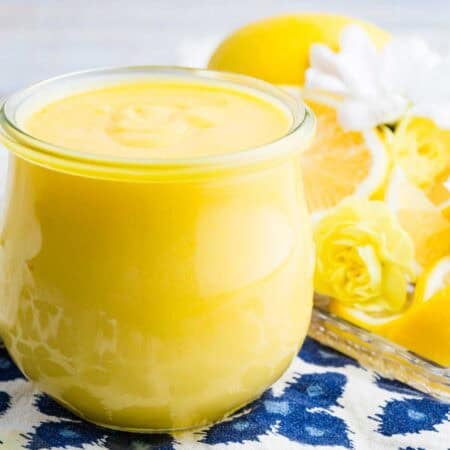
Lemon Curd Recipe
Ingredients
- 6 large egg yolks
- 1 cup granulated sugar
- ½ cup freshly squeezed lemon juice
- ½ cup unsalted butter , at room temperature, cut into 1/8 inch thick slices (can substitute vegan butter)
Instructions
- Add about an inch of water to a medium saucepan and bring to a simmer over medium-low heat.
- In a medium glass bowl, whisk together the 6 large egg yolks and 1 cup granulated sugar for about 2-3 minutes, or until smooth and light in color. Whisk in the ½ cup freshly squeezed lemon juice until combined.
- Place the bowl over the water in the saucepan, ensuring that it does not touch the water. Stir constantly with a rubber spatula, scraping the bottom and sides for about 10-15 minutes, until mixture thickens and reaches 180°F, gently increasing the heat, if necessary.
- Immediately remove from the heat and whisk in the ½ cup unsalted butter, one piece at a time, waiting until one piece disappears before adding another.
- Strain the lemon curd through a sieve to remove any bits that may have curdled.
- Pour the curd into glass jars and press plastic wrap against the surface to prevent a skin from forming. Cool and store in the refrigerator. Will keep for a couple of weeks.





